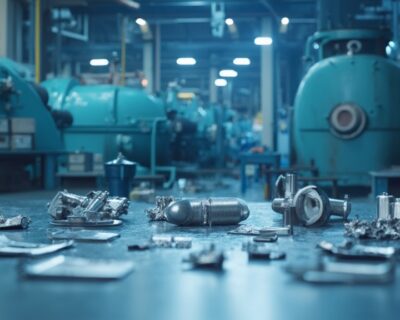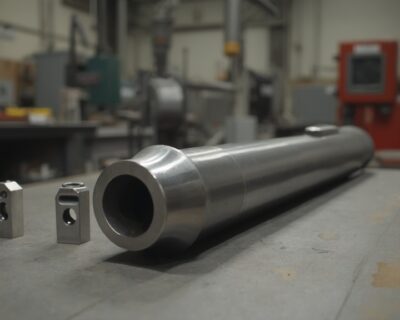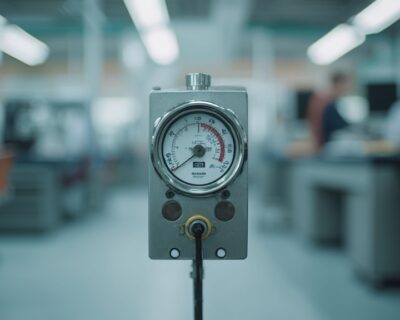Blogs

Innovative Applications of Alloys Titanium in Aerospace Engineering
Introduction
Titanium alloys have become a fundamental material in the aerospace industry, known for their high strength-to-weight ratio, corrosion resistance, and fatigue performance. These unique properties make titanium essential in environments where safety, performance, and reliability are critical.
However, recent geopolitical tensions, especially the conflict in Ukraine—a major titanium producer—have disrupted global supply chains. This titanium shortage has significantly impacted the Maintenance, Repair, and Overhaul (MRO) sector.
As global air travel rebounds to nearly pre-pandemic levels, the demand for titanium is rising rapidly. The aviation industry must now find innovative supply chain solutions to meet production demands.
In this article, we explore:
- The key properties of titanium alloys
- Their benefits in aerospace applications
- Use in critical aerospace components
- Innovations in titanium alloy manufacturing
- Future trends and developments in the aerospace sector
Key Properties of Titanium Alloys
Titanium alloys are popular in aviation due to their exceptional strength-to-weight ratio, allowing aircraft to be both strong and lightweight. This leads to better fuel efficiency and increased payload capacity.
Other key properties include:
- High corrosion resistance, which increases component life
- Superior fatigue strength, maintaining performance under stress
- Thermal stability, allowing titanium to perform well in extreme temperatures
One of the most widely used alloys in aviation is Ti-6Al-4V, which combines titanium with aluminum and vanadium for enhanced strength and ductility.
Unfortunately, the titanium supply chain has faced disruptions. The conflict in Ukraine, a key supplier of aerospace-grade titanium, has slowed production and export. This has placed extra strain on the MRO sector, especially as global air travel now operates at 97% of pre-pandemic levels.
To meet growing demand, manufacturers are turning to advanced titanium forging techniques. These high-strength titanium parts are critical in industries like aviation, defense, and automotive.
Advantages of Titanium Alloys in Aerospace
The aerospace industry depends heavily on titanium alloys due to several advantages:
- Lightweight performance – Reduces aircraft weight, leading to improved fuel efficiency and range.
- Corrosion resistance – Lowers long-term maintenance and replacement costs.
- Heat resistance – Enables use in high-temperature zones like jet engines and exhaust systems.
- Long lifecycle – Ensures durability and reliability over many flight cycles.
The current titanium shortage, driven by the Ukraine conflict and the previous reliance on Russian supply, has forced aerospace leaders like Airbus, Boeing, and Embraer to diversify their sourcing strategies.
Before 2022, Russia provided nearly 50% of the world’s titanium for aerospace. Today, companies are increasingly sourcing titanium from China, the world’s largest producer, to reduce supply chain risks.
With domestic air travel in the U.S. surpassing 2019 levels by over 9%, the aviation sector is working hard to fulfill a growing order backlog. This highlights the need for reliable access to titanium alloys and more resilient supply chains.
Applications of Titanium in Aerospace Components
Titanium alloys are used extensively in:
- Airframes – Providing structural strength while reducing overall aircraft weight.
- Engine parts – Including compressor blades, casings, and exhaust ducts, where high heat and pressure resistance are vital.
- Fasteners – Strong, lightweight connectors that reduce the total mass of an aircraft.
Due to their strength, corrosion resistance, and thermal performance, titanium alloys are ideal for both military and commercial aircraft.
However, the titanium supply crisis has disrupted production timelines. As noted by Toma Matutyte, CEO of Locatory.com, flexible logistics strategies are now essential to maintain progress in aircraft manufacturing.
With air travel demand rising fast, titanium’s role as a reliable, high-performance material is more critical than ever.
Innovative Manufacturing Techniques for Titanium Alloys
Modern manufacturing technologies are revolutionizing how titanium alloys are produced.
Additive Manufacturing (3D Printing)
- Allows the production of complex shapes with minimal material waste
- Methods like Electron Beam Melting (EBM) and Selective Laser Melting (SLM) ensure precise control over material properties
- Enables lighter, stronger components optimized for aerospace performance
Real-World Applications
- At Il Sentiero International Campus, researchers use 3D printing to create inspection jigs that replicate aircraft parts, improving safety and precision
- TRUMPF CEO Richard Bannmueller explains:
“Our 3D printing systems are key to sustainable flying and reducing dependency on long supply chains.”
The metal 3D printing market is expanding rapidly, with titanium, nickel, stainless steel, and aluminum as major materials. North America, especially the U.S., remains a major player due to its strong aviation and defense sectors.
Future Trends in Titanium Aerospace Applications
The future of titanium in aerospace looks promising, thanks to several exciting trends:
1. Hybrid Manufacturing
Combining additive and subtractive methods to improve material performance and reduce production times.
2. Recycling Titanium Scrap
Encouraged by rising costs and environmental concerns, manufacturers are focusing on reusing titanium remnants, lowering both costs and environmental impact.
3. Supply Chain Resilience
To address future shortages, aerospace companies are building more flexible sourcing strategies. As Toma Matutyte highlights, overcoming today’s challenges requires agility and innovation.
4. Sustainable Engineering
Companies like Morgan Advanced Materials are leading the way with eco-friendly production techniques and smart material use, driving innovation across the aerospace supply chain.
Conclusion
Titanium alloys remain a critical material in aerospace due to their lightweight strength, corrosion resistance, and high thermal performance. But today’s global challenges—like the titanium shortage and evolving geopolitical landscape—make it more important than ever to secure reliable sources and invest in advanced manufacturing.
With innovations like 3D printing and hybrid manufacturing, the aerospace industry is transforming the way titanium parts are designed, produced, and used. These advancements also support long-term goals of sustainability, efficiency, and cost reduction.
As air travel demand continues to rise, the need for high-performance titanium alloys will grow. Forward-thinking manufacturers and procurement managers must act now to build resilient supply chains and adopt the latest in titanium technology.
Secure Your Titanium Supply Today
Looking for reliable, aerospace-grade titanium alloys?
Contact Domadia to explore our wide range of titanium products—engineered for high performance and tailored to meet the evolving needs of the aerospace industry.
🔗 Want to learn more or get in touch?
Visit us at domadia.net/contact and let’s connect!




